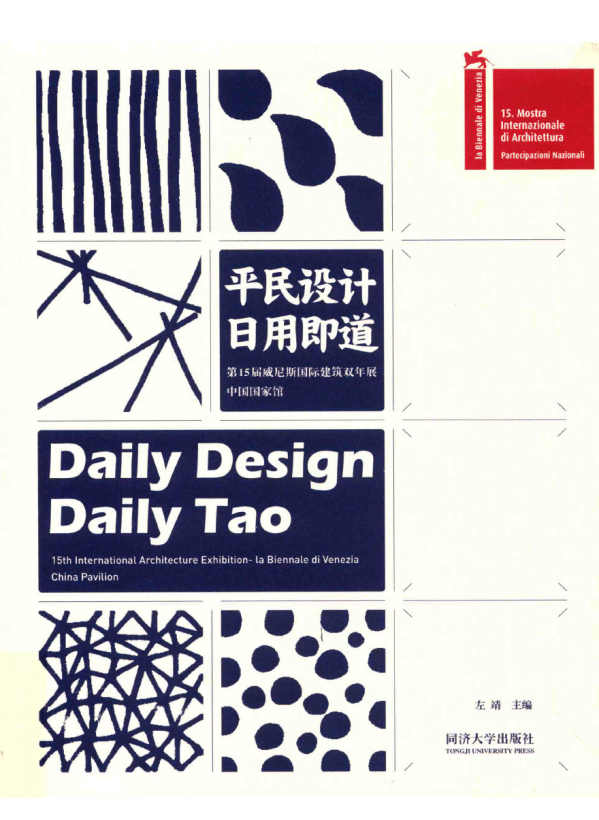By: Anne Schulze
Qiwei Li is an emerging figure in architectural design, rapidly gaining recognition for his innovative contributions, exceptional work, and profound insights in the field. He is known for infusing fresh inspiration and pioneering ideas into architecture, scholarly research, and education.
One of Li’s significant achievements is his article, “City Show,” which won an Excellence Award in UED magazine’s competition. UED (“Urban Environment Design”) is a prestigious journal approved by China’s National Press and Publication Administration, jointly sponsored by Liaoning Science and Technology Publishing House and the School of Architecture at Tianjin University. As the first stylish and interdisciplinary professional magazine in China’s architectural industry, UED is renowned for its high-quality content and unique perspectives. It is included in the “China Academic Journal Comprehensive Evaluation Database” and the “Chinese Science and Technology Journal Database.” The magazine has been named one of China’s top 100 media by the People’s Daily Research Institute and awarded the title of “China’s Most Beautiful Magazine” by the China Periodical Fair, with approximately 12,000 copies per issue reaching readers in over 40 countries. Li’s article, “City Show,” stands out for its insightful exploration of urban design challenges and innovative solutions, combining academic rigor with practical insights. It delves into the essential qualities of an ideal urban environment and proposes innovative design concepts and methods to achieve this vision.
Winning an excellence award in the UED field signifies the recognition of a designer’s or team’s design capabilities and innovative spirit. Such awards indicate:
- Recognition of Design Ability and Innovation: Winning an excellence award in a competitive field highlights the exceptional performance in design concepts, innovation, and practicality, earning high praise from the judges.
- Industry Acknowledgment: UED competitions and awards hold significant industry recognition. Receiving an excellence award means the work has substantial influence in the design industry, bringing reputation and opportunities to the winner or team.
- Positive Impact on Future Development: Winning an excellence award in the UED field positively influences the future career of the individual or team, helping them build a better reputation in the industry and potentially attracting more collaboration opportunities and project invitations.
Li’s impact extends to architectural education through his influential paper, “Exploring the Diverse Educational System in the Master of Architecture Program at the University of California, Berkeley,” published in The Architect. As China’s academically influential architectural journal, The Architect is managed by the Ministry of Housing and Urban-Rural Development of China and published by China Architecture & Building Press. The journal is a Tier 2 scientific publication, recognized among the 20 certified architectural journals by the Ministry of Education’s Degree and Graduate Education Development Center. Li’s study explores the success of UC Berkeley’s master’s program in fostering diverse talents through interdisciplinary and practical skills training, providing valuable insights for architectural education in China.
Li also played a vital role in the Chinese National Pavilion at the 15th Venice Biennale of Architecture, an event that stands alongside Documenta in Kassel, Germany, and Art Basel in Switzerland as one of the influential showcases in contemporary art and architecture. The theme of the Chinese Pavilion, “Design by the People: Tao in Daily Life,” reflects Li’s commitment to integrating traditional culture with modern design. This prestigious project, led by chief curator Liang Jingyu, brought together architects, landscape architects, fashion designers, and artists to create exhibits that harmonize traditional culture, sustainable development, and societal needs. Their work responded to the Biennale’s overarching theme, “Reporting from the Front,” introduced by Pritzker Prize-winning curator Alejandro Aravena. Li’s participation in this project and inclusion in the exhibition catalog highlight his role in shaping a dialogue between tradition and innovation on a global stage.

Li’s contributions extend beyond theoretical work to exploring the intersection of architecture and technology. He made a significant impact through his work on “Mastering Midjourney with One Book,” a publication by Midjourney, an independent research lab dedicated to new media and expanding human creativity. The lab, led by experts like David Holz of Leap Motion and researchers from leading tech companies such as Apple, AMD, Tesla, and Intel, focuses on developing innovative technologies and tools. Li’s contributions to the architecture section explore how to utilize Midjourney’s tools and resources to turn creative ideas into reality, providing practical tips and case studies. This work showcases his expertise in design, creativity, and his understanding of cutting-edge technology. The book became a bestseller on Dangdang and received rave reviews on Douban, further establishing Li’s reputation for excellence in integrating AI with architectural design.

Building on his success, Li founded Super-Workflow.com, an educational platform offering AI-driven architectural courses. With over 500 students enrolled annually, his original teaching methods combine architecture with AI, creating significant commercial value and transforming both the architecture and education industries. His innovative approach ensures that his teachings are applied in practical settings, benefiting both students and professionals.
Moreover, Li’s achievements and contributions demonstrate the dynamism and innovative spirit of the new generation of young designers. His creative thinking and commitment to social responsibility have brought fresh energy and momentum to the architectural field. He embraces a people-oriented and sustainable approach to design, merging traditional culture with modern technology while emphasizing social responsibility and humanistic values. His practical achievements and contributions to theoretical research, education, and teaching have won him widespread acclaim and recognition, establishing him as a leading figure and visionary in China’s architectural design landscape.
Li’s ongoing development of AI models for architectural applications, like the ArchGPT project, is set to enhance learning for architecture students by providing AI-driven insights and real-time feedback. This approach democratizes access to high-quality education and supports professional development, ensuring that practicing architects stay updated with the latest trends and essential practices, ultimately leading to a more skilled workforce and improved architectural practice quality in the U.S.
Published by: Nelly Chavez


















